#Morchella conica
Text
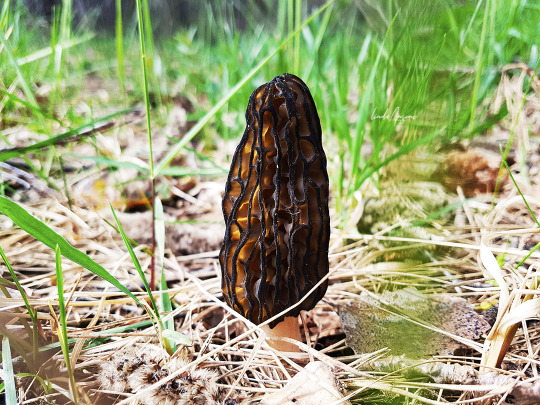

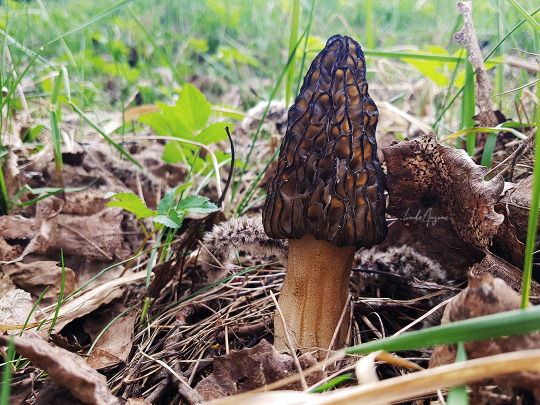

Morchella conica
Morels have been a Holy Grail of mushrooms for me. They're pretty common, yet I could never spot one. I'm always in the wrong place or time for them. But my luck changed for the better this Spring (April 12, 2024)
#morchella conica#morels#morel mushrooms#edible mushrooms#mycology#mushrooms#fungi#mushroom photography#nature photography#original photography#i went all across the city to look for morels in a park with no luck#but then I found these guys the next day in my town XD
375 notes
·
View notes
Text
Morchelle, Prugnoli e ora anche i primi Porcini – Aggiornamento funghi 11-04-2024
[vc_row][vc_column][vc_column_text]
Morchelle, Prugnoli e ora anche i primi Porcini
Aggiornamento funghi 11-04-2024 – Prima parte
Che primavera strana questa del 2024.
Prima un mare di pioggia, che non ci attendevano, con un’altrettanto inattesa montagna di neve sulle Alpi, poi il caldo anomalo, con temperature fino a 28/30°C anche al Nord e, dopo una importante sciroccata calda che ci ha coperti…

View On WordPress
#Calocybe gambosa#Hygrophorus marzuolus#Marzuoli#Morchella conica#Morchella dunalii#Morchella elata#Morchella esculenta#Morchelle#Porcini#Porcini primaverili#Prugnolo#Varallo Sesia
1 note
·
View note
Text
How to Identify Morels
Originally posted at my website at https://rebeccalexa.com/how-to-identify-morels/ - Click here to learn more about the How to Identify article series.
Name: True morels (Morchella spp.)
Range and typical habitat(s): Widespread throughout temperate North America, Europe, New Zealand and Australia; less commonly reported in South America, Asia, and coastal Africa. Morels are commonly found in wooded areas, and many species grow primarily on soil; these may have symbiotic (though not necessarily mycorrhizal) relationships with trees and other plants. Other morels, such as M. importuna, are saprotrophs that happily colonize dead wood, to include mulch used in landscaping. At least one, the white morel M. rufobrunnea, may be capable of both lifestyles. Morels are exceptionally difficult to cultivate, and no large-scale cultivation method has been developed as of this writing.
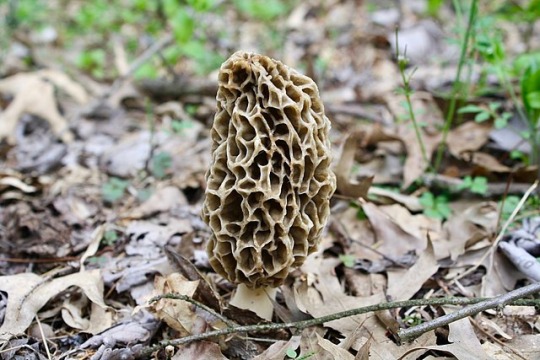
M. americana
Both deciduous and conifer forests may be homes to morels; yellow morels tend toward deciduous, while conifer forests are more likely to feature black morels. A wide variety of tree genera may be associated with morels include but are not limited to Pseudotsuga, Pinus, Abies, Quercus, Fraxinus, Alnus, and Castanea.
However, the half-free morels–M. punctipes (seen below), M. populiphila, and M. semilibera–may have a small space between the bottom edge of the cap and the stipe. The cap has a honeycombed appearance, with surfaces deeply pockmarked with cavities surrounded by brittle ridges that crumble into fragments when crushed. Colors vary, and morel species are often grouped together by cap color; black morels have a dark brown to black cap, while yellow and white morels are more tan to cream.

M. punctipes, cut in half to show hollow centers, and only the upper portion of the caps attached to the stipes. Photo by Chase G. Mayers, CCA-4.0
The stipe may be lightly textured, and is usually lighter in color than the cap, often white, cream, or pale yellow depending on species. Cutting a morel’s stipe open reveals that it is entirely hollow inside. A mature morel is generally around three to six inches high, though larger specimens have been found.

M. americana with the top removed, showing the hollow interior.
The stipe may be lightly textured, and is usually lighter in color than the cap, often white, cream, or pale yellow depending on species. Cutting a morel’s stipe open reveals that it is entirely hollow inside. A mature morel is generally around three to six inches high, though larger specimens have been found.
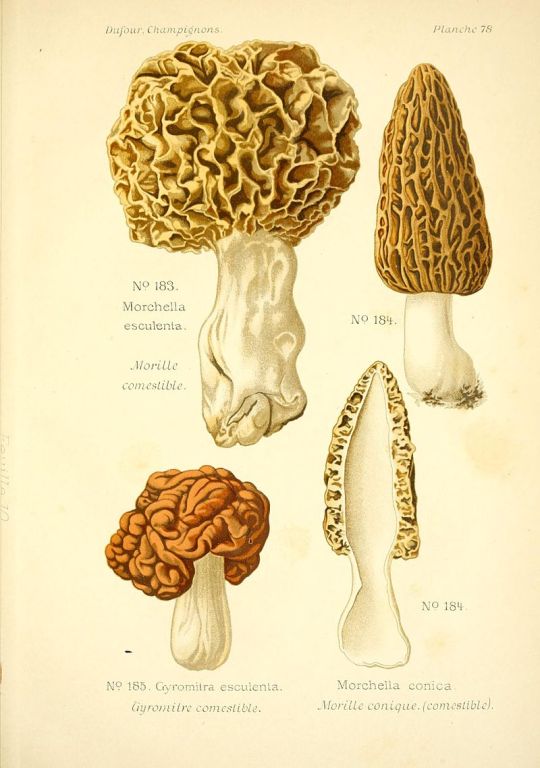
A vintage illustration shows three morels, to include one cut in half to display the hollow center; the mushroom in the lower left is a false morel (Gyromitra esculenta).
Other organisms it could be confused with and how to tell the difference: There are multiple groups of mushrooms that look similar enough to morels to cause confusion; given morels are a popular edible mushroom, consumption of some of these lookalikes has caused serious illness on numerous occasions.

V. bohemica; note that the bottom edge of the cap is not attached to the stipe, and that it has more of a wrinkled appearance than honeycombed. By NeoSporen, CCA-SA-3.0.
Members of the genus Verpa look similar to half-free morels in that the bottom edge of the cap is not attached to the stipe. However, when cut in half the half-free morels have more of the upper portion of the cap attached to the stipe; Verpas only have the very tip attached. Outwardly they do look quite similar to morels overall, often having a conical cap with a honeycombed texture; some may have less distinct cavities and a more “lumpy” appearance rather than honeycombed. The cap of the Verpa is generally smaller in proportion to the stipe than on mature morels. The stipes of young Verpas are full of soft, fluffy hyphae, but they become hollow like morels as they mature.
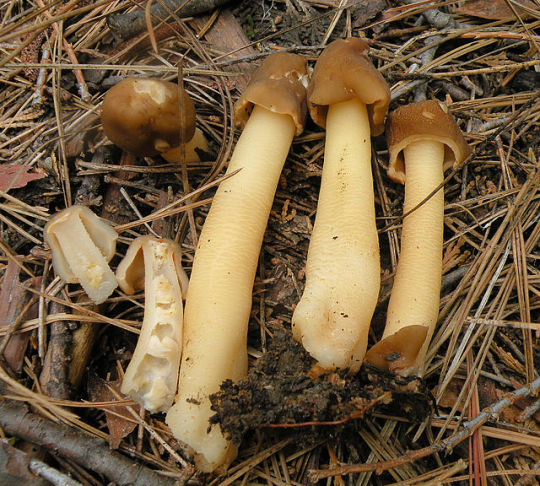
V. conica, showing one cut in half. Note that the cap is only attached to the stipe at the very top, and there is still some fungal hyphae tissue in the center of the stipe. Photo by Jeff Riedenauer (Tamsenite), CCA-SA-3.0.
Like morels, they are considered by some to be edible when thoroughly cooked. However, one study purports that V. bohemica is also toxic, having the same sort of toxins as the false morels I’ll discuss below. Some field guides recommend avoiding the other Verpa species as well due to potential inedibility. Both Verpas and morels fruit in spring, and may sometimes be found in the same area. As someone who would like to become an old, rather than bold, mushroom hunter, I recommend skipping the Verpas and sticking to the true morels, just in case.
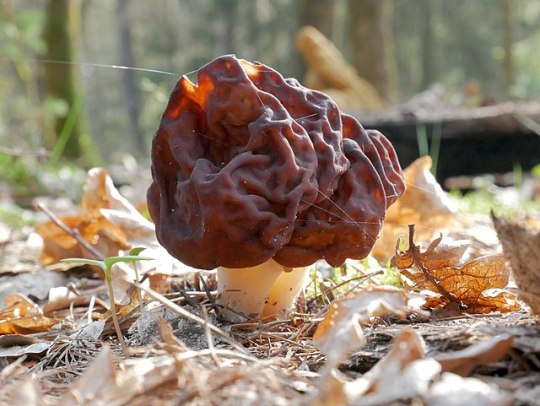
A false morel (Gyromitra spp.); notice that instead of looking like a cone made of honeycomb, it resembles a raisin or a brain on a stalk.
False morels, in the genus Gyromitra, are a more notorious morel lookalike. Several species contain significant levels of gyromitrin, a compound that when boiled or consumed hydrolizes into monomethylhydrazine, a chemical used in making rocket fuel. Consumption may cause gastrointestinal distress, neurological symptoms, kidney and liver failure, coma, and failure of the respiratory and circulatory systems. The most severe cases result in death within a week after consuming false morels. Some species have more gyromitrin than others, and it’s likely that the compound can build up over time in people who eat false morels on a regular basis. While there are purported methods used to reduce or remove gyromitrin from false morels, as a foraging instructor I do not recommend consuming any Gyromitra false morels due to the risk of severe illness.

G. californica. Note that the stipe is not completely hollow inside, but has several cavities divided by fungal tissue. Photo by Alan Rockefeller, CCA-SA-4.0.
So how do you tell the difference? Where true morels look like honeycombed cones, false morels look like brains, oversized raisins, or piles of worms. If you cut a true morel open the stipe will be completely hollow, but the interior of a false morel may have multiple smaller chambers or be completely solid. It is exceptionally important to make sure you get a sure identification on whatever species you are picking, as true and false morels fruit in spring, and sometimes in the same areas.

M. angusticeps
Anything else worth mentioning? Morels are definitely one of those mushrooms you want to cook thoroughly before eating, as raw or undercooked morels can cause gastrointestinal distress. Also, if you hang around mushroom foragers long enough, you’ll hear all sorts of advice–some of it conflicting–about when and where to find morels. It’s true that they fruit in spring, starting in lower elevations where it warms up sooner, and then higher elevations as spring temperatures continue to rise. South-facing slopes that warm up faster with sunlight may also see earlier fruiting. And, of course, places that burned or were logged in the last year or two may see a bumper crop of morels the following spring. Many patches of morel mycelium only last a few years, so the place you found morels one year may not fruit the next.
Beyond that, it’s best to study up on the species of morel that grow in your area. Find out what sorts of habitats they like, if they’re associated with any particular trees, whether they are responsive to burns and other disturbances, and whether there are any toxic look-alikes that grow nearby.
Further reading:
The Great Morel
Mushroom Expert: Morchellaceae
Tom Volk’s Morel Page
Mushroom Appreciation: Morel Mushroom
Did you enjoy this post? Consider taking one of my online foraging and natural history classes, checking out my other articles, or picking up a paperback or ebook I’ve written! You can even buy me a coffee here!
#morels#mushrooms#fungi#fungus#mushroom hunting#mushroom foraging#foraging#wild foods#wild mushrooms#mycology#biology#nature#outdoors#forest#poisonous mushrooms#edible mushrooms
173 notes
·
View notes
Photo
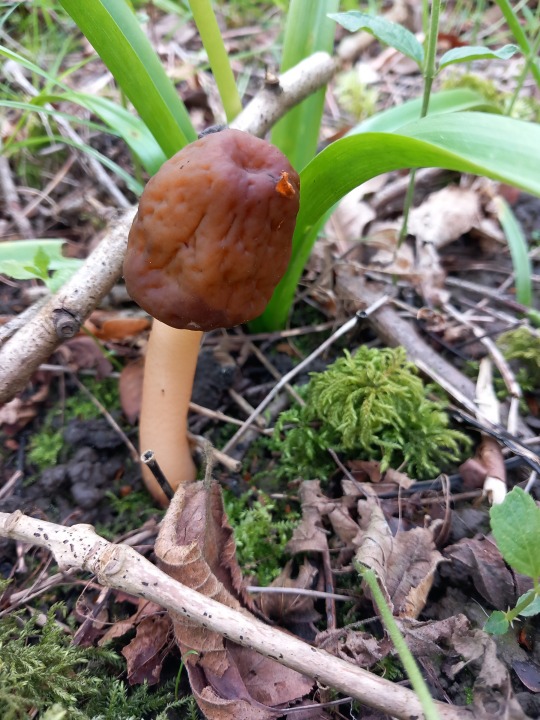


Cambridge, UK, April 2023
Thimble cap morels (Verpa conica)
This mushroom is one of the often-demonised ‘false morels’ - fungi that look like Morchella species, but aren’t. In reality, most of these fungi are not to be feared, being edible (when well-cooked, just like ‘true’ morels) and tasty. I also find them every year, although I’ve only ever found a single Morchella!
I sauteed these ones with a little vegan butter and salt and had them on toast. (The other piece is topped with St George’s mushrooms - post to follow!)
50 notes
·
View notes
Photo
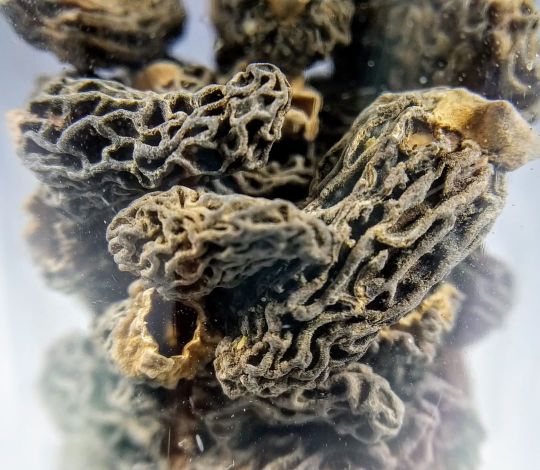
𝐆𝐞𝐝𝐫𝐨𝐨𝐠𝐝𝐞 𝐌𝐨𝐫𝐢𝐥𝐥𝐞𝐬 (𝐌𝐨𝐫𝐜𝐡𝐞𝐥𝐥𝐚 𝐂𝐨𝐧𝐢𝐜𝐚) - Morilles hebben een hazelnootachtige smaak met rijke houtachtige aroma’s. - Eén van de meest gewilde paddenstoelen voor fijnproevers. - De Morchella Conica wordt de Rolls Royce onder de morilles genoemd vanwege haar uitstekende geur en smaak. - Morilles zijn heerlijk met asperges of tuinbonen, maar ook prima in (room)sauzen en ragouts. - Deze morilles hebben een zeer sterke smaak, 10 gram is daarom vaak genoeg voor een heerlijke smaak in je gerecht https://arnhemdeli.nl/product/gedroogde-morilles/ - - - - - #GedroogdeMorilles #Morilles #Risotto #Pasta #Morchella #Conica #honger #voedselgasme #instafood #yum #lekkere #yumyum #heerlijk #eten #diner #eten #vulling #warm #mooi #ontbijt #lunch #foodgasm #instafood #yummy #delicious #eat #dinner #food (at Arnhem Noord) https://www.instagram.com/p/CNaRwAMC-cX/?igshid=1ofrltwhj1o3
#gedroogdemorilles#morilles#risotto#pasta#morchella#conica#honger#voedselgasme#instafood#yum#lekkere#yumyum#heerlijk#eten#diner#vulling#warm#mooi#ontbijt#lunch#foodgasm#yummy#delicious#eat#dinner#food
0 notes
Photo
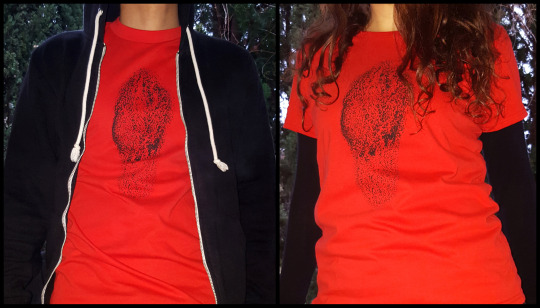
T-Shirts Morille Morchella Conica
Série Limitée à 20 exemplaires
Sérigraphiés à la main par mes soins
Tout derniers exemplaires !!!
https://peggyannmourot.com/etiquette-produit/textiles/
(magnifiques modèles aka mon homme et moi-même)
#drawing#painting#illustration#dessin#peinture#art#artist#contemporaryartist#modernartist#modernart#expressionism#expressionist#contemporaryart#arte#fineart#atelier#serigraphie#silkscreen#artsy#artstudio#artiststudio#frenchartist#artprints#artshop#inked#indianink#prints#darkartist#darkart#peggyannmourot
2 notes
·
View notes
Photo

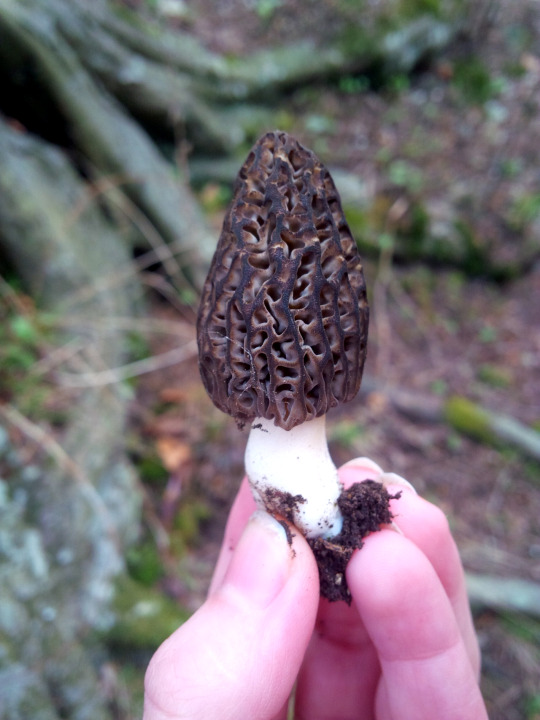
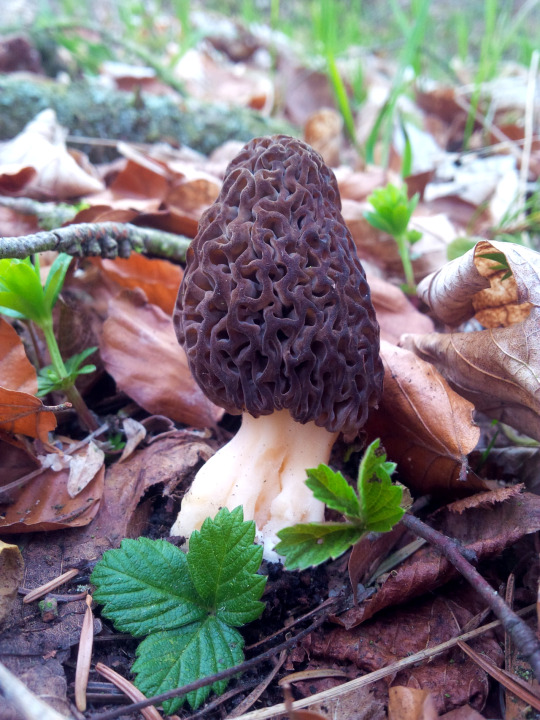
Smrž kuželovitý (Morchella conica)..pretty AND edible mushroom
55 notes
·
View notes
Text
Inspiration: Fungi
A collection of strange, unique and interesting fungi to inspire your worldbuilding, loot creation, lore writing, or anything else you may need for your D&D/other RPG campaigns.
Check out the ones I did for Gems and Plantlife
Please feel free to add more inspiring fungi to the post, or share what you create!
( Trypophobia trigger warning )
Blue Milk Mushroom (Lactarius indigo)

This widespread mushroom can be found in a wide variety of forests, where it forms symbiotic relationships with a broad range of trees around it. The flesh of the mushroom is a striking blow, and when cut the mushroom oozes a milky latex substance that is bright, indigo blue (although it slowly turns green as it is exposed to air over time)
Blue Milk Brew: A popular brew for pranksters, the fermented milk from this mushroom looks like regular milk in appearance, but will slowly turn the one who drinks it blue over time.
Clear Blue Skies Charm: A charm made from this petrified mushroom will ensure that the weather on your travels remains favorable, with clear blue skies, until the mushroom turns completely green.
Bitter Oyster ( Panellus Stipticus)

This widely distributed fungus grows in dense groups or clusters on logs, stumps, and trunks of deciduous trees (especially birch, oak and beech) Its bio luminescence is localized to the edges of the gills and the junction of the gills with the stem and the cap.
Draught of Contact Luminescence: A small vial filled with a faintly glowing potion. When consumed, your body will emit a bright glow wherever it is in contact with something (including itself) - your feet, the fold of your elbow, the creases of your eyes, etc...
Clustering Boots: The gnarled and frilling boots allow you to easily adjust to tight quarters, and in fact allow you to operate better when in close quarters. You are able to share space with others and gain action bonuses when you do.
Adornments of Strength: Small petrified clusters of these fungal groups can be strapped to wooden armor and weapon pieces, giving them a bonus to their durability and overall power.
Golden Jelly Fungus (Tremella Mesenterica)

The gelatinous body of this parasitic fungus has a lobed surface that is greasy or slimy whenever wet. In dry weather it shrinks to a shriveled pulp or thin film, but will revitalize itself once wet again. Bland and flavorless, but edible.
Golden Jelly: A staple food ration, this jelly can be dried out allowing you to carry 32 oz. of jelly in a small 8 oz. jar. Simply coat a piece of bread or cracker with the thin film and add a small splash of water or flavored syrup and the jelly will manifest before your eyes!
Golden Grease: A thin, glistening oil that makes anything coated with it nearly impossible to grab or be grappled - works on people and items alike!
The Rosy Veincap (Rhodotus palmatus)

This species of mushroom is on the decline and is on many lists of threatened species. It can be found mostly on the stumps and logs of rotting hardwood, and is most easily identified by it’s peachy color and rubbery veined surface.
Veinthorn Poison: A soft, rose colored liquid that, upon entering the bloodstream, begins to shred and dehydrate all the veins in the body. Corpses that have fallen to this poison are identified when they are cut open, reveling an internal cardiovascular system that resembles the same fungus the poison was made from.
Rosecap Candies: Small pink candies with cracked sugar webbing that can be eaten for a small boost to charisma, especially when trying to be charming or seductive.
Woodrot Gloves: These fine suede gloves are made from a delicate pink material, and feature a delicate and intricate pattern embroidered over them with white thread. Despite their opulent appearance, these magic gloves allow the wearer to press through and destroy hardwood of any sort as though it were butter.
Violet Coral (Clavaria zollingeri)

This tubular and vibrantly purple fungus resembles a piece of coral reef commonly found in the ocean, but is actually a fungus most commonly found growing among woodland litter or in grasslands, breaking down fallen organic matter.
Landwalker Coral: A small symbiotic parasite that grows just off of most sea shores, this small plant allows any waterbreathing creature to breathe on land by growing into their respiratory system and out of their gills, serving to process the dry air instead of their gills.
Violet Vestments: A set of vestments dyed a brilliant violet color that grows in intensity to ensure that you are always the most bright and striking thing in the area. A favorite for Bards looking to be the center of attention.
Anemone Stinkhorn (Aseroe rubra)
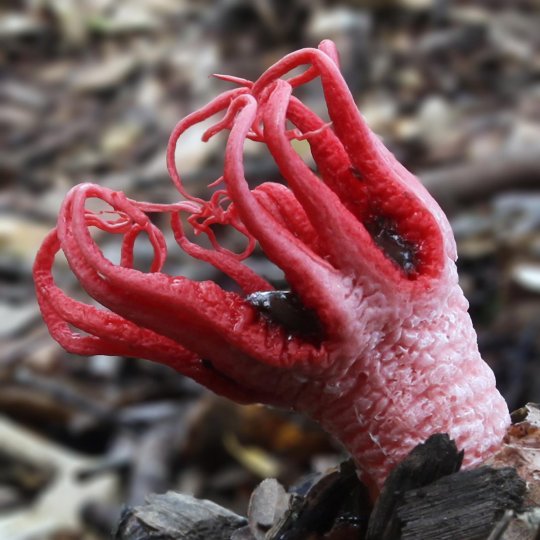
This foul fungus is known for its odor of carrion, as well as it’s striking resemblance to sea anemone in shape once matured. Found on mulch in grassy areas, this fungus relies on it’s offending odor to attract flies that help spread its spores.
Drowned Corpse Star Spores: A small vial of spores that can be carefully administered to the victim of your choice. Said victim will develop small red polyps all over their body as they slowly find themselves drowning on dry land. When the body finally succumbs to the water flooding its lungs, the polyps bloom into small star shaped mushrooms looking to spread to another victim.
Stinkhorn Bomb: A tight red pod that unfurls on impact, releasing a wave of overwhelming odor that requires a constitution save in order to remain conscious and upright if caught by it.
Anemone Sea Devil: A fiendish being from the depths of the sea, this strange variant of Myconid, these beings grow and live on the sea beds, where they reach their tendrils towards the surface and snare unsuspecting prey to drag into the depths.
Pixie’s Parasol (Mycena interrupta)
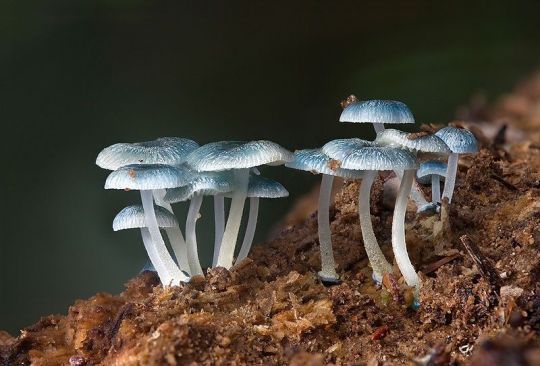
These delicate mushrooms are incredibly small, their broad caps only growing up to 2 centimeters in diameter. They take on a slimy, sticky texture when wet and their cyan caps resemble tiny umbrellas.
Feywild Parasol: When plucked, these small mushrooms grow to the size of a standard parasol, and will protect the wielder from all weather - hot sunlight, blizzard-like snow, biting rain, etc...
Pixie Potion: A sickeningly sweet blue potion that transforms the consumer into a pixie. However, exposure to sunlight will immediate undo the effect
The Black Morel (Morchella conica)
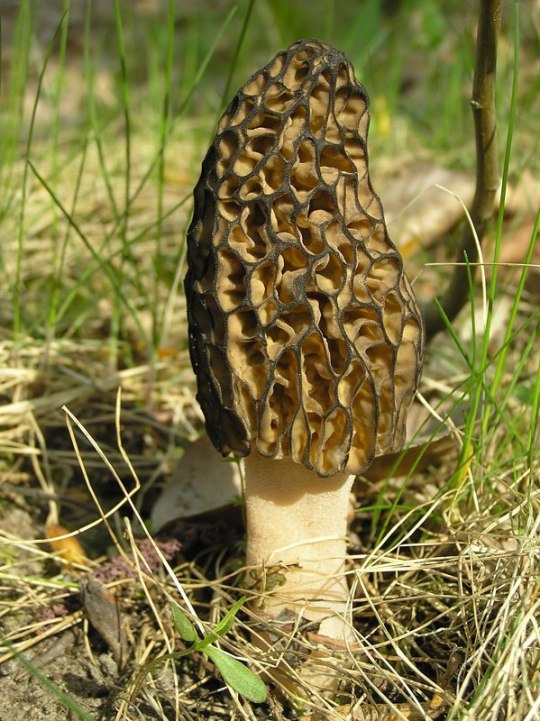
This fungus features a distinctive honeycomb structure created by a network of dark ridges and pits. It;s prized by many gourmet cooks (especially with french cuisine) and is even sought after by many who simply enjoy the flavor and the hunt.
Traveler’s Sweet Broth: An easy soup to make on the road, this broth is made by stewing these dried mushrooms over the fire for long periods of time. The longer they are stewed, the sweeter and more rich the broth becomes.
Seeker’s Stone: A stone created from a valuable dried fungal cap that attracts to the most valuable thing within 10 miles. A favorite possession for treasure hunters.
Alright, that’s the third of the “series” - feel free to add in what you were inspired to create, or other fungi that you think will get the gears grinding for others!
115 notes
·
View notes
Text

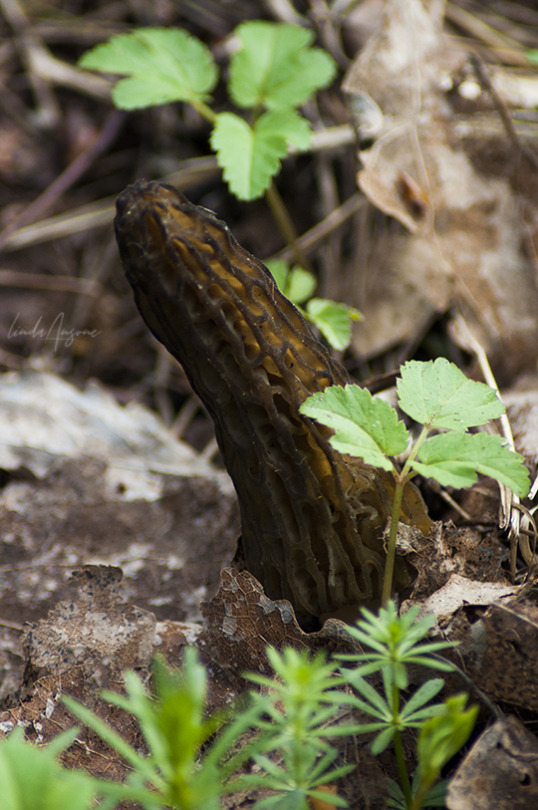

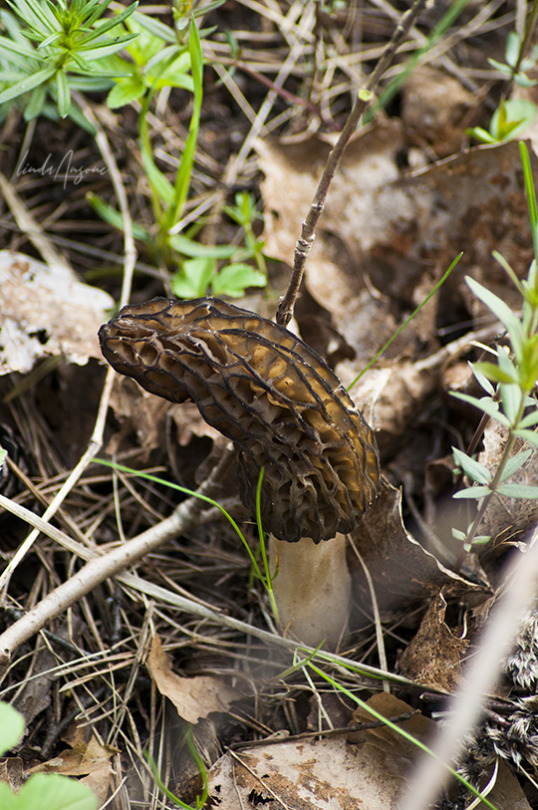
Morchella conica
#morels#morchella conica#mushrooms#fungi#mycology#mushroom photography#edible mushrooms#nature#nature photography#naturecore#foraging#original photography#photographers on tumblr#spring mushrooms
143 notes
·
View notes
Photo
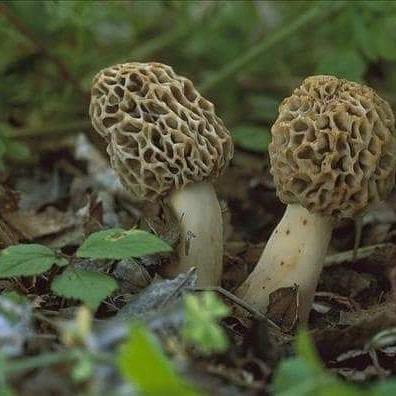
Смачні, корисні, безмежно ароматні та рідкісні в Україні сушені ГРИБИ СМОРЧКИ (Morchella conica або Verpa bohemica) якість екстра, 100 шт~100 грам 💧при контакті з водою вони набувають вигляду та форми свіжого гриба 🌞сушу при температурі 39*С щоб зберегти усі цінні і смакові властивості гриба. 👌Дуууже ексклюзивний продукт, на рівні трюфеля. Користуються широким попитом в Європі та Америці. 👆Органічні, якісно висушені, ретельно відібрані, зібрані в екологічно чистих лісах України 🌲🌳🍃🍄 Зі сморчками Ваші страви стануть ще більш вишукані, ексклюзивні та делікатесні😋👌 Маю досвід роботи та хорошу репутацію з ресторанами України🤝 P.S.:👆будьте обережні, бо люди часто плутають справжні сморчки з несправжніми #Мацутаке #грибок #Гриби #Сморчки #Трюфель #Трюфель #Білийтрюфель #Чорнийтрюфель https://www.instagram.com/p/CSlYrhoLitl/?utm_medium=tumblr
1 note
·
View note
Photo

mushroomy warmup sketched Chlorophyllum moldybites Infundibulicybe geotropa Morchella conica referenced from wikimedia images #sketchbook #illustration #art #artistsoninstagram #mycology #mushroom
1 note
·
View note
Photo
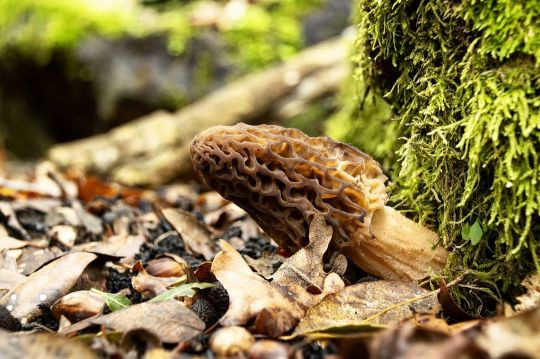
🆔 Morchella deliciosa Fr. (1822) Syn. Morchella conica var. deliciosa (Fr.) Cetto (1988) PH. @red.etna • • • • • #morchella deliciosa is a species of edible #fungus in the family #morchellaceae. It was first described scientifically by Elias Magnus Fries in 1822. It is a European species, although the name has erroneously been applied to morphologically similar North American #morels. #morchelladeliciosa #Morchelle #morchellavulgaris #morchellas #morchellaelata #morchellaesculenta #morchellaconica #morchellafluvialis #etna #etnavolcano #sicilia #sicily #funghimagazine #aggiornamentofunghi #blogfunghi #semaforodeifunghi #morilles #morelseason #morillesfraiches #funghietna #funghisiciliani (presso ETNA VULCANO ATTIVO PIU' ALTO D'EUROPA) https://www.instagram.com/p/COUdGjAsKvz/?igshid=11b2fx3z1dzco
#morchella#fungus#morchellaceae#morels#morchelladeliciosa#morchelle#morchellavulgaris#morchellas#morchellaelata#morchellaesculenta#morchellaconica#morchellafluvialis#etna#etnavolcano#sicilia#sicily#funghimagazine#aggiornamentofunghi#blogfunghi#semaforodeifunghi#morilles#morelseason#morillesfraiches#funghietna#funghisiciliani
0 notes
Text
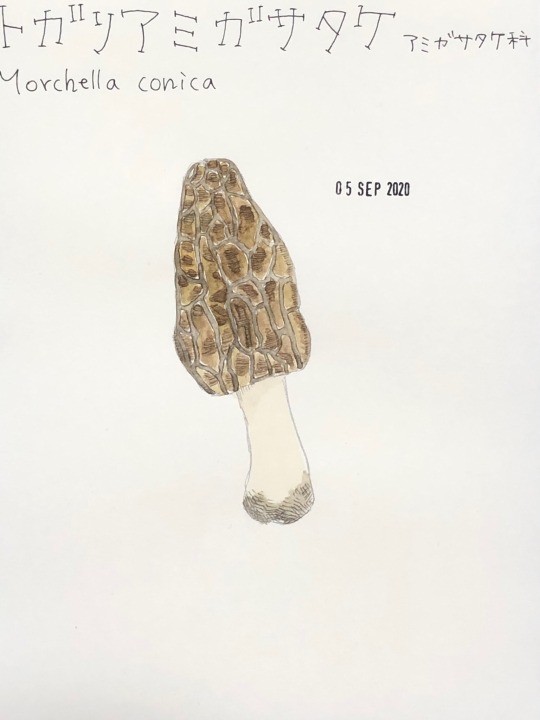
20200905
きのこ図鑑
No.133 トガリアミガサタケ
Morchella conica
#illustration#dessin#イラスト#絵#1日1絵#アナログ#手描き#きのこ#きのこイラスト#水彩画#水彩画イラスト#水彩絵の具#透明水彩#きのこ図鑑#お絵描き#mashroom#champignon#drawing#paint#painting#watercolor
1 note
·
View note
Link
Today's #FnFPicks #CreatureOfTheDay is #BlackMorel (#Morchella conica) #DidYouKnow As with all wild mushrooms, one should make sure to cook them before consuming. For mushrooms, generally, they are part of our natural environment. Some species help nourish forest trees through symbiosis, and others are wood rotters, breaking down dead trees to recycle back into the soil. ORGANISM CLASSIFICATION: Kingdom: Fungi Division: Ascomycota Subdivision: Pezizomycotina Class: Pezizomycetes Order: Pezizales Family: Morchellaceae Genus: Morchella Species: M. conica Please consider sharing the video with someone who'd love these #FunFacts If you want to Suggest Animals for our videos (which is recommended), or have any complaints, please feel free to hit us anywhere over the #FnFPicks Community: Facebook: https://www.facebook.com/FnFPicks Twitter: https://twitter.com/FnFPicks Instagram: https://www.instagram.com/FnFPicks And don't forget to Subscribe...:-) #StayHome #WithMe #PickOfTheDay #Fungus #Fungi #FungusAmongUs
0 notes
Photo
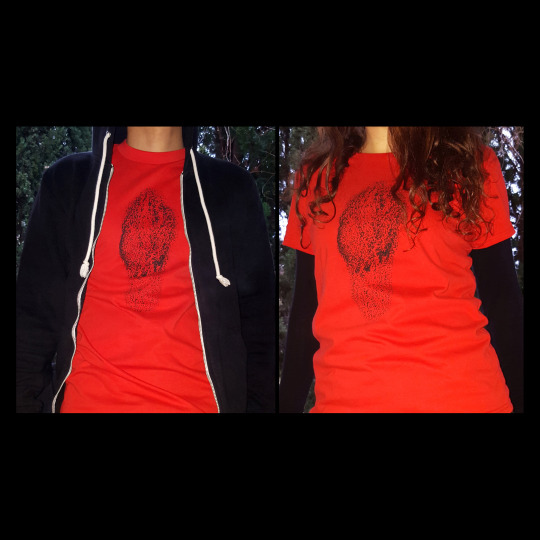
TShirts en Série Limitée sérigraphiés à la main par mes soins, déclinés à partir de mes dessins. Ici, Morchella Conica, ma morille à l'Encre de Chine que j'aime tant. Tous derniers exemplaires !
https://peggyannmourot.com/categorie-produit/t-shirts/
#drawing#painting#illustration#dessin#peinture#art#artist#contemporaryartist#modernartist#modernart#expressionism#expressionist#contemporaryart#arte#fineart#atelier#morille#morchella#artstudio#artiststudio#frenchartist#morchellaconica#artshop#inked#photography#tshirts#textiles#darkartist#darkart#peggyannmourot
3 notes
·
View notes